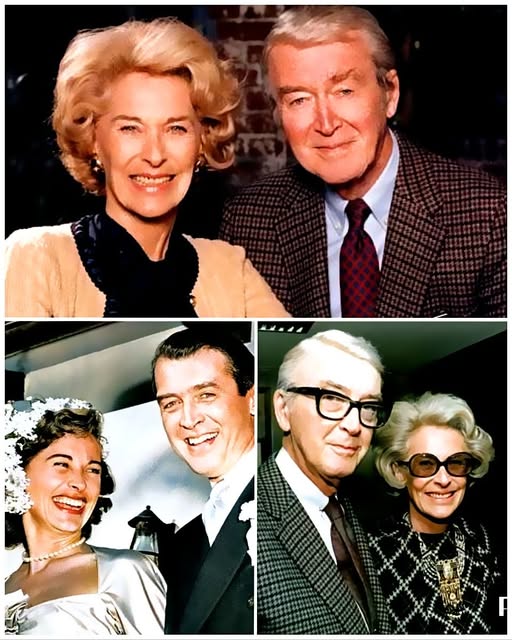James Stewart first saw Gloria Hatrick McLean at a dinner party in 1948
James Stewart first saw Gloria Hatrick McLean at a dinner party in 1948. He was 40, already one of Hollywood’s most beloved stars, with unforgettable performances in “Mr. Smith Goes to Washington” (1939), “The Philadelphia Story” (1940), and “It’s a Wonderful Life” (1946). She was a strikingly elegant former model, a woman of grace and wit, divorced, and raising two young sons. Their conversation began across the dinner table, evolving naturally, quietly. Stewart, who had long been viewed as a lifelong bachelor, felt something shift inside him as he listened to her speak. Gloria, unbothered by his fame or wealth, spoke with candor and insight. Unlike anyone he had known in his years navigating Hollywood’s golden circles, she didn’t seek attention. She offered depth, and it moved him.
He had shared time with glamorous women such as Marlene Dietrich, Ginger Rogers, and Olivia de Havilland, yet none had truly challenged his solitude. Gloria’s presence dismantled the distance he had always kept. Before long, he was spending his weekends with her and her sons, Ronald and Michael, enjoying long drives, nature walks, and cozy family dinners. What started as casual companionship quickly grew into something richer. Stewart, always reluctant to give too much of himself away, found joy in reading bedtime stories, tying shoelaces, and helping with homework.
On August 9, 1949, James and Gloria married at Brentwood Presbyterian Church in Los Angeles. It was an intimate affair attended by family and close friends. There were no studio photographers, no flashing bulbs, only quiet smiles and sincere affection. Stewart, known for his dignified composure, seemed visibly moved as he slipped the ring onto Gloria’s finger. Their honeymoon was private, their joy shared mostly among themselves and the two boys who would soon call him Dad. Stewart adopted Ronald and Michael, and when twin daughters Judy and Kelly were born in 1951, the family felt whole.
They lived in a modest Beverly Hills home filled with warm lighting, photographs, and blooming roses planted by Gloria herself. Stewart began turning down film roles that would keep him away for too long, focusing on projects that allowed him to be present. Even as he starred in major films like “Harvey” (1950), “Rear Window” (1954), and “Vertigo” (1958), his loyalty to home never wavered. The house echoed with music, children’s laughter, and the comforting rhythm of daily rituals. Gloria hosted friends, supported charities, and remained fiercely protective of their privacy.
Disagreements came, as they do in any marriage. Sometimes it was about the boys’ schooling, or Stewart’s quiet habit of retreating into himself during times of stress. But every argument ended with long talks under the stars or peaceful drives through Mulholland Drive. They understood each other. Gloria never tried to change him, and he never asked her to conform. He admired her strength, especially when Ronald enlisted and was later sent to Vietnam.
In 1969, Ronald was killed in action, a tragedy that shook the family to its core. Stewart, devastated, leaned entirely on Gloria to carry him through the pain. She mourned quietly, holding the family together while her husband wept behind closed doors. He later said that Gloria’s ability to endure that loss without crumbling saved him from breaking.
Despite the sorrow, they continued to live with grace. They traveled together often, spending time in Europe and vacationing in Colorado. Their children remember afternoons filled with fishing trips, camping, and listening to their father’s soft voice reading stories by the fireplace. Stewart was never boastful about his career. He taught by example kindness in grocery lines, thankfulness toward strangers, and humility even after decades in the spotlight.
In interviews, when asked about his greatest success, Stewart always pointed to Gloria. He said she gave him a life worth far more than anything he ever achieved on screen. Their love was never about drama or grand gestures. It thrived in the small, consistent acts of care they gave one another for nearly 45 years.


